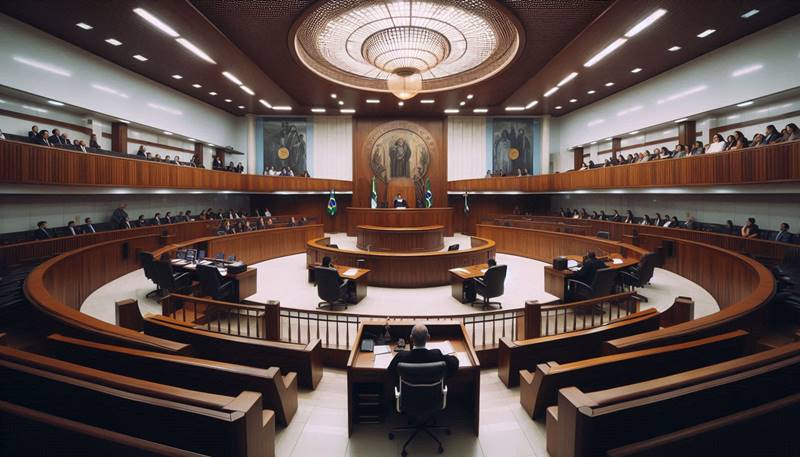Comparative Analysis: Civil Law vs. Common Law vs. Sharia vs. Soviet Law
Introduction
The world’s legal systems are diverse, reflecting a range of historical, cultural, and political influences. Among these, civil law, common law, Sharia law, and Soviet law represent distinct legal traditions with unique characteristics and approaches to justice. This article compares these four legal systems, highlighting their structures, key features, and legal processes, with contemporary examples from each system.
Legal System Overview
Civil Law
Civil law, also known as continental law, is a legal tradition derived from Roman law. It is characterized by comprehensive codification and the reliance on written statutes. Civil law systems are prevalent in Europe, Latin America, and parts of Asia and Africa.
Common Law
Common law is a legal tradition rooted in medieval England. It is characterized by case law and judicial precedents. Common law systems are prevalent in the United Kingdom, the United States, Canada, Australia, and other former British colonies.
Sharia Law
Sharia law is a legal system based on Islamic principles derived from the Quran, Hadith (teachings of Prophet Muhammad), and other Islamic texts. It is practiced in various forms across Muslim-majority countries in the Middle East, Africa, and South Asia.
Soviet Law
Soviet law was the legal system of the former Soviet Union, influenced by Marxist-Leninist ideology. It was characterized by the supremacy of state interests and the absence of private property rights. Elements of Soviet law can still be found in some post-Soviet states.
Legal Structures and Examples
Civil Law: France
- Source of Law: Code Civil (French Civil Code)
- Example: France is a prime example of a civil law country. The French Civil Code, enacted in 1804, serves as a foundation for the legal system. It covers various aspects of private law, including contracts, property, family law, and obligations.
- Application: In France, judges apply the codified laws to cases, with limited discretion. Legal certainty is achieved through detailed statutes that provide clear guidelines.
Common Law: United States
- Source of Law: Uniform Commercial Code (UCC)
- Example: The United States operates under a common law system, where case law and judicial precedents play a crucial role. The UCC, which governs commercial transactions, exemplifies the integration of statutory law with judicial interpretation.
- Application: U.S. courts rely on precedents to decide cases, and judges have considerable discretion to interpret laws. The adversarial system ensures that both parties present their arguments before a neutral judge.
Sharia Law: Saudi Arabia
- Source of Law: Quran and Hadith
- Example: Saudi Arabia implements Sharia law as the primary legal system. The Quran and Hadith serve as the main sources of legislation, guiding all aspects of legal, social, and personal conduct.
- Application: In Saudi Arabia, judges (Qadis) interpret and apply Sharia principles based on religious texts. The legal system covers areas such as family law, criminal law, and commercial transactions, with a focus on moral and ethical guidance.
Soviet Law: Russia
- Source of Law: Constitution of the Russian Federation
- Example: Russia, as a successor state to the Soviet Union, retains elements of Soviet law in its legal system. The current Constitution, adopted in 1993, incorporates principles of state supremacy and public ownership.
- Application: While Russia has undergone significant legal reforms, remnants of Soviet law persist, especially in areas like property rights and state control. The judiciary, although more independent than during Soviet times, still faces challenges related to political influence.
Key Features and Legal Processes
Civil Law
- Codification: Laws are codified in comprehensive legal codes.
- Role of Judges: Judges apply codified laws with limited discretion.
- Legal Certainty: Emphasis on clear, written statutes to provide legal certainty.
Common Law
- Precedent: Judicial decisions create binding precedents for future cases.
- Flexibility: Judges have considerable discretion to interpret laws.
- Adversarial System: Legal proceedings are often adversarial, with parties presenting their cases before a neutral judge.
Sharia Law
- Religious Foundations: Laws are based on religious texts and principles.
- Moral and Ethical Guidance: Sharia provides both legal and moral guidance.
- Varied Implementation: The application of Sharia varies widely, influenced by local customs and interpretations.
Soviet Law
- State Supremacy: Laws reflect the interests and policies of the Communist Party.
- Limited Private Rights: Emphasis on state ownership and control over resources.
- Instrument of Control: The legal system served as a tool for political and social control.
Conclusion
Civil law, common law, Sharia law, and Soviet law represent diverse legal traditions with distinct characteristics and approaches. Civil law emphasizes codification and legal certainty, common law relies on judicial precedents and flexibility, Sharia law integrates religious principles, and Soviet law prioritized state interests. Understanding these differences, along with contemporary examples, is crucial for legal professionals and scholars, providing insight into how various legal systems function and their impact on society.
Raphael da Fonsêca Ferreira de Souza
Lawyer specialized in Comparative Law
I hope this article is useful and informative. If you have any questions or need more information, please do not hesitate to contact me!



